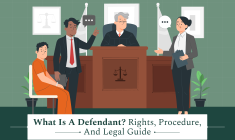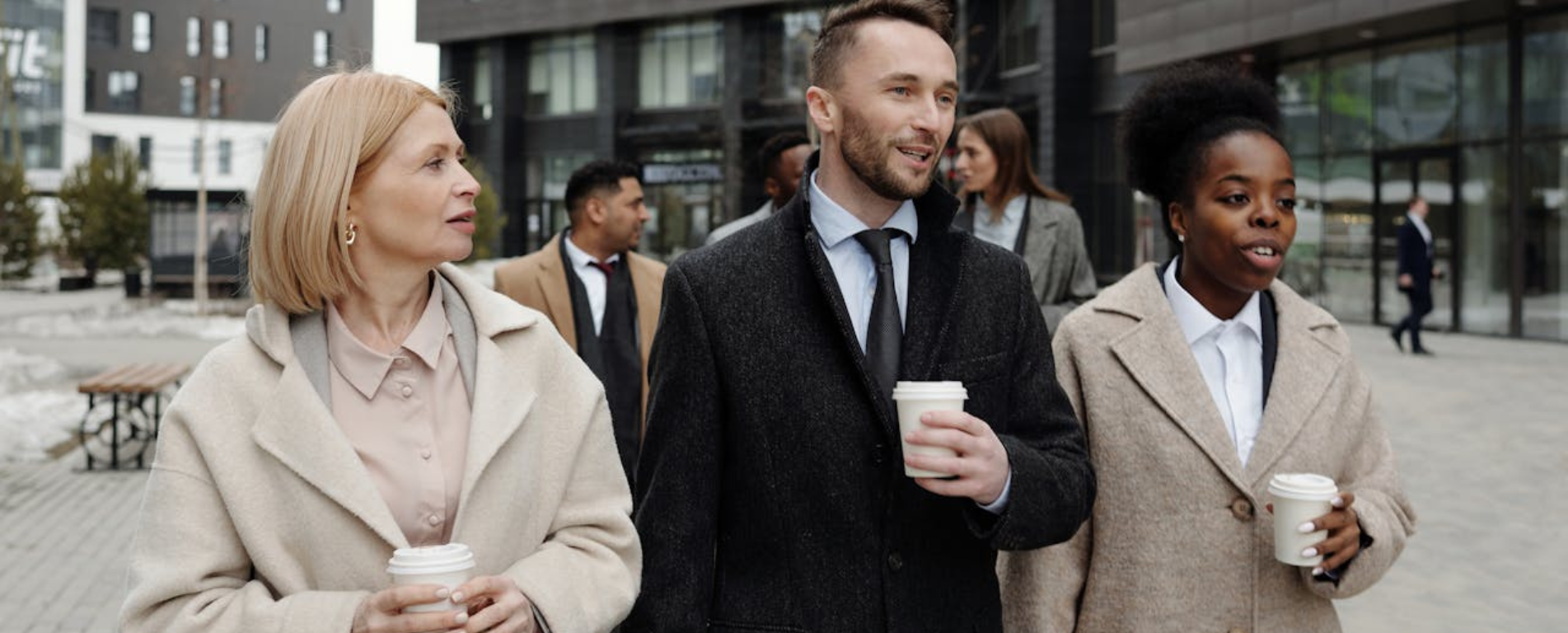Today’s topic: What do lawyers wear?
Because in courtrooms, boardrooms, and client meetings, in the office or out, clothing isn’t fashion – it’s credibility weaponized. Or, to put it in more human terms: it’s the difference between being trusted and being tolerated (source).
Legal attire doesn’t just set the tone – it pre-loads assumptions in a profession built on perception.
A courtroom is a live-action chessboard where jurors, judges, and opposing counsel are constantly reading the body, the tone, the rhythm – and yes, the lapel line.
You dress down? You risk subconsciously being assigned the role of underdog, newbie, or worse – “not prepared.”
But it’s not just about being overdressed. An overly flamboyant or ill-fitting ensemble can backfire. A three-piece pinstripe with a fuchsia tie might scream confidence in some industries.
In court? It can read as arrogance.
A great example: a junior associate at a New York firm showed up to a pre-trial conference in cufflinks that flashed with every hand movement.
Opposing counsel made a point of distracting the judge by drawing attention to the “bling.” The judge didn’t smile. Message received.
What Do Lawyers Wear?
In high-stakes litigation, senior partners often keep two versions of their suit jacket: one slightly roomier to allow for subtle gesturing without pulling, and another tighter for on-camera interviews or press appearances.
The ideal jacket shoulder should extend no more than 0.5 inches beyond the natural shoulder, and the jacket length should cover the seat completely, typically 29–31 inches, depending on height.
If you’re choosing clothes or accessories for a lawyer, you’re not just buying fabric. You’re reinforcing their professional identity and protecting their persuasive edge.
Clothes make the argument – long before the lawyer speaks.
What Does a “Lawyer’s Suit” Actually Mean?
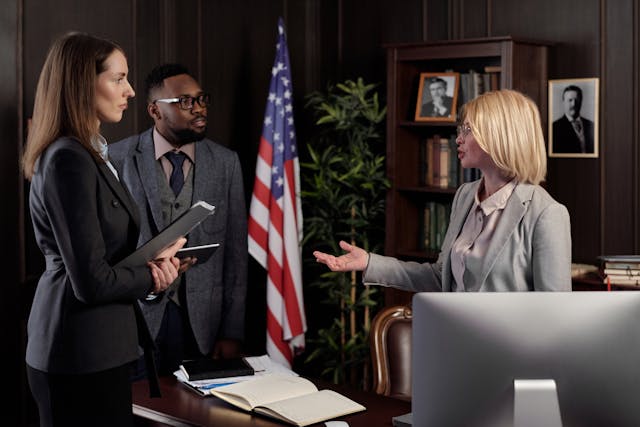
Not every suit earns its stripes in the legal world. Some whisper power. Others? They mumble.
The phrase “lawyer suit” isn’t shorthand for any dark blazer-and-slacks combo. It’s a uniform carefully engineered around tone, comfort, and posture. Different legal niches require different nuances:
Litigators lean into heavyweight wool suits (10–12 oz) with padded shoulders for a squared, imposing presence during trials. Think of it as armor – but more breathable.
Transactional attorneys working in mergers or tech law favor medium-weight suits (8.5–9.5 oz) with side vents and stretch lining, allowing them to stay seated during back-to-back closings without sacrificing structure.
Public defenders or legal aid attorneys often opt for versatile blends (like poly-viscose or tropical-weight wool), balancing professionalism with durability in less forgiving work environments – translation: the subway, the courthouse basement, or three different zip codes before lunch.
For women in law, there’s often more scrutiny around versatility and neutrality (source). The goal? Structured without being severe, stylish without veering into fashion-forward.
For example, a single-breasted navy sheath dress with a matching cropped blazer, hemmed just above the knee (~21–23 inches), has become a modern go-to for female partners arguing before appellate courts – professional, powerful, non-distracting.
Insider Tip: Top-tier firms will often subsidize bespoke tailoring for junior associates, knowing that a perfect sleeve break (typically 1/4″ above the shirt cuff) and properly hemmed trousers (breaking just once on the shoe) can subconsciously influence partner-track evaluations.
Sound far-fetched? It’s not. Humans are biased by symmetry. Ask Vogue. Or the Harvard Psych Department.
Precision tailoring isn’t vanity – it’s tactical. If the garment doesn’t hold its shape, neither does the impression it leaves.
What About the Briefcase?
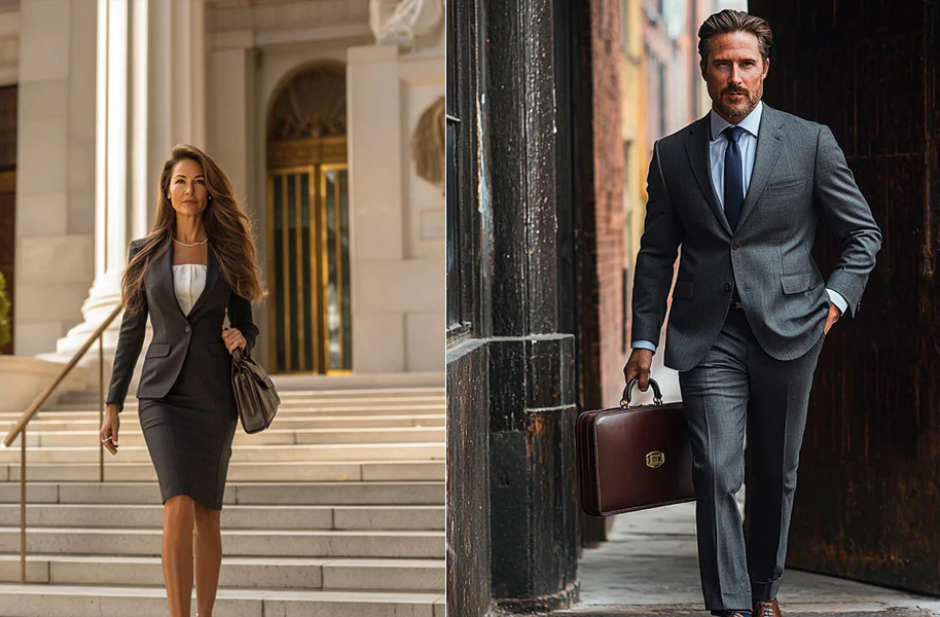
The briefcase is the lawyer’s portable command center – and a not-so-subtle symbol of readiness, competence, and control.
From a practical standpoint, it’s where the essentials live: legal pads, exhibits, charging cables, deposition transcripts, case law printouts, water bottles, mints, stress balls, maybe even a protein bar.
A good briefcase keeps everything organized and secure without looking like a tactical backpack or a traveling salesman’s catalog.
Symbolically, the right briefcase communicates decisiveness and professionalism before a word is spoken. It’s not just luggage – it’s legacy.
Senior partners still remember who walked into their first deposition with a battered department-store satchel and who showed up with a sleek, structured leather briefcase that said, “I came to win.” Von Baer says that subtle authority can be powerfully conveyed with the right lawyer briefcase, and we agree.
A lawyer’s bag says as much as their closing argument. Make it count.
Do Lawyers Wear Robes – and Who Gets to Choose?
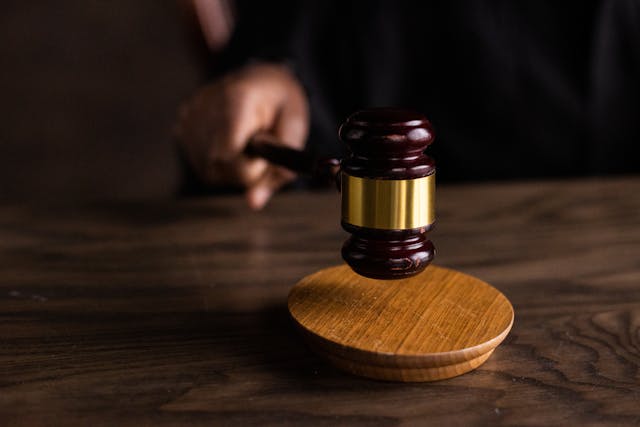
Yes – but only some. In the United States, robes are almost exclusively the domain of judges, and even then, there’s more variation than most people expect.
Most judges wear a traditional black robe, but within that tradition, there’s room for personal preference.
Some prefer matte wool blends (typically 100% wool or 70/30 wool-poly) for year-round breathability. Others opt for lightweight synthetics with 12 mm internal shoulder padding to reduce fatigue during long court days.
Details Matter
The cut of the robe, the fit across the back, and even the stitching around the collar can quietly shape perception. While the robe is meant to project impartiality, the tailoring still whispers authority – and sometimes a bit of personality.
Real-World Detail
Chief Justice John Roberts famously wears a robe with four gold stripes on each sleeve – a nod to the judicial garb worn by Gilbert and Sullivan’s Lord Chancellor in Iolanthe. Yes, even robes have inside jokes. Think of it as the legal system’s version of an Easter egg.
The robe might symbolize neutrality – but what’s underneath still speaks volumes. The moment the robe comes off, the message continues.
Your Legal Guide: Understanding The Dress Code For Lawyers
So, by now, you are fully aware of the fact that lawyers really have a dress code that they have to follow. And this particular dress code is there for a reason.
It is there to project three of the most important things:
- Professionalism.
- Respect for the court.
- Confidence in a case.
We know how people often say, “you must look your part!” But guess what? Legal professionals really take it very seriously. The way they dress helps to build credibility and seriousness when it comes to legal proceedings.
Read Also:



